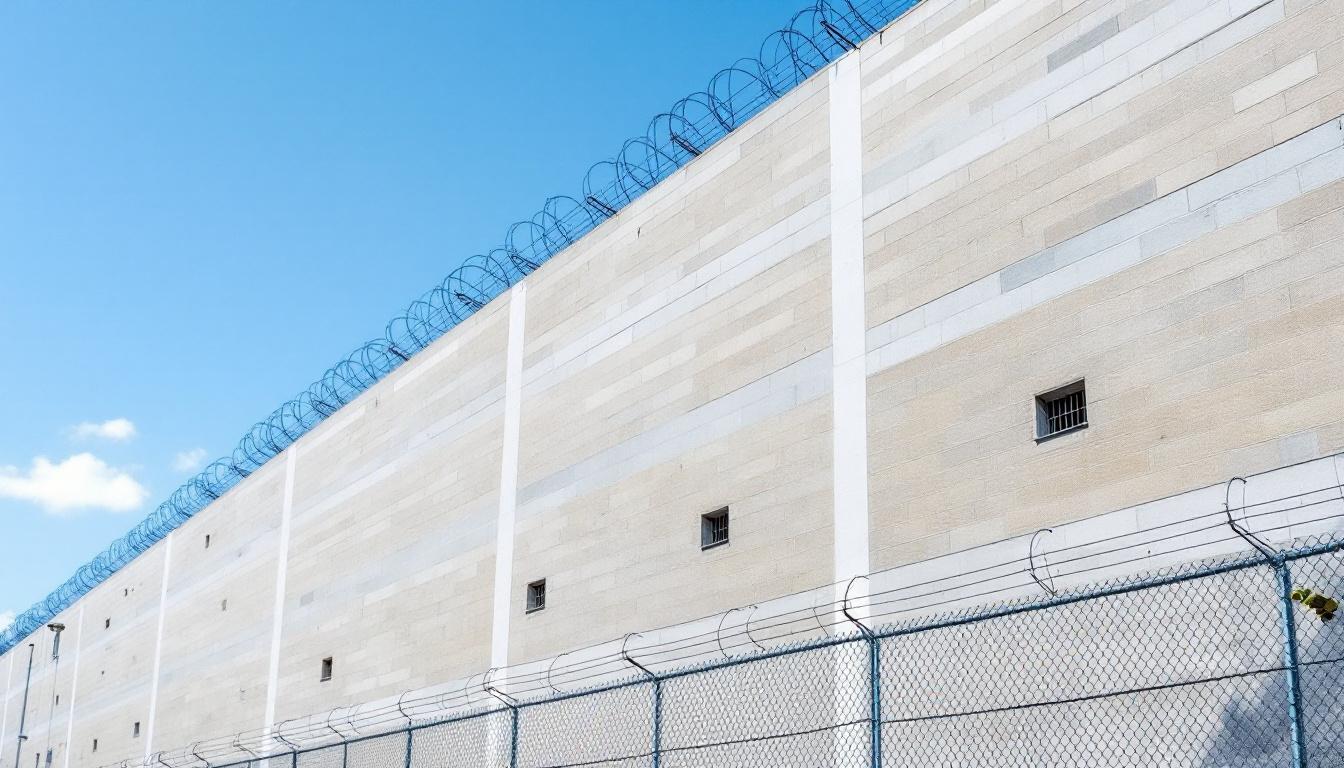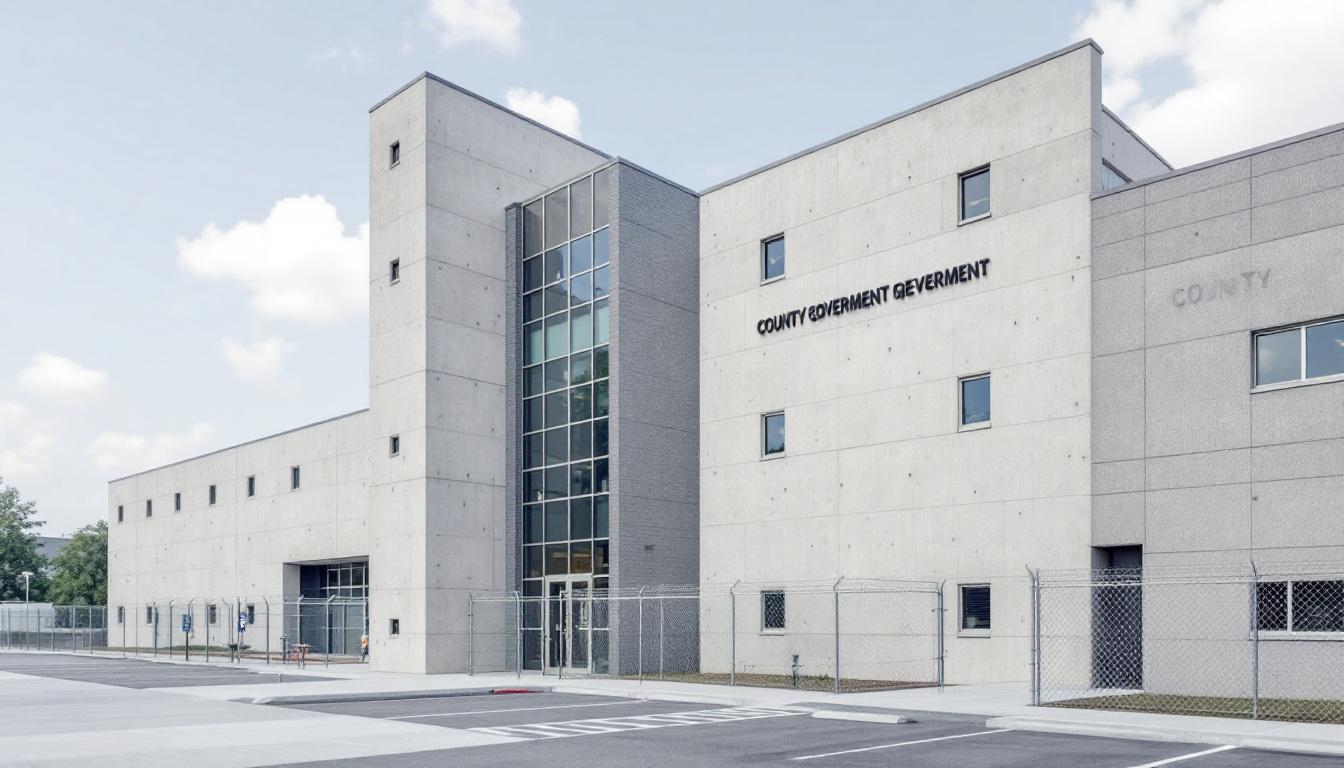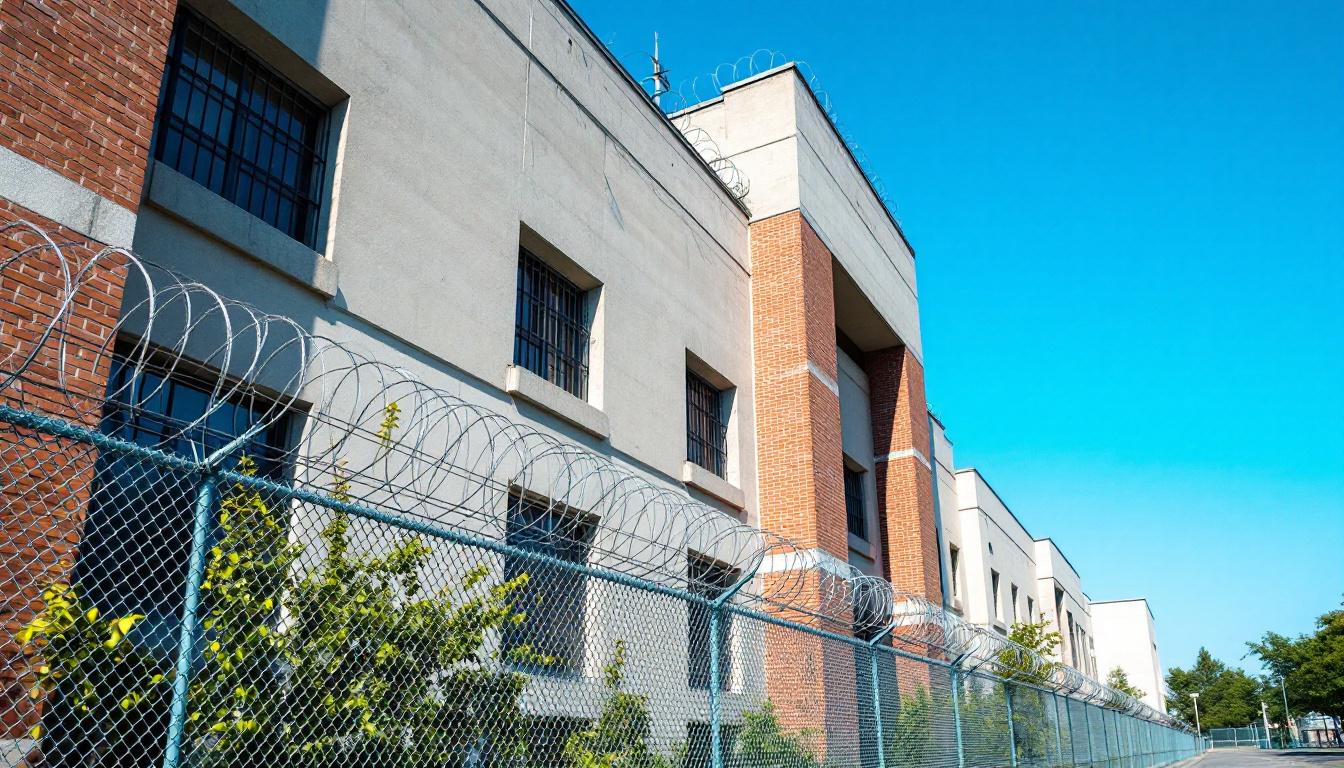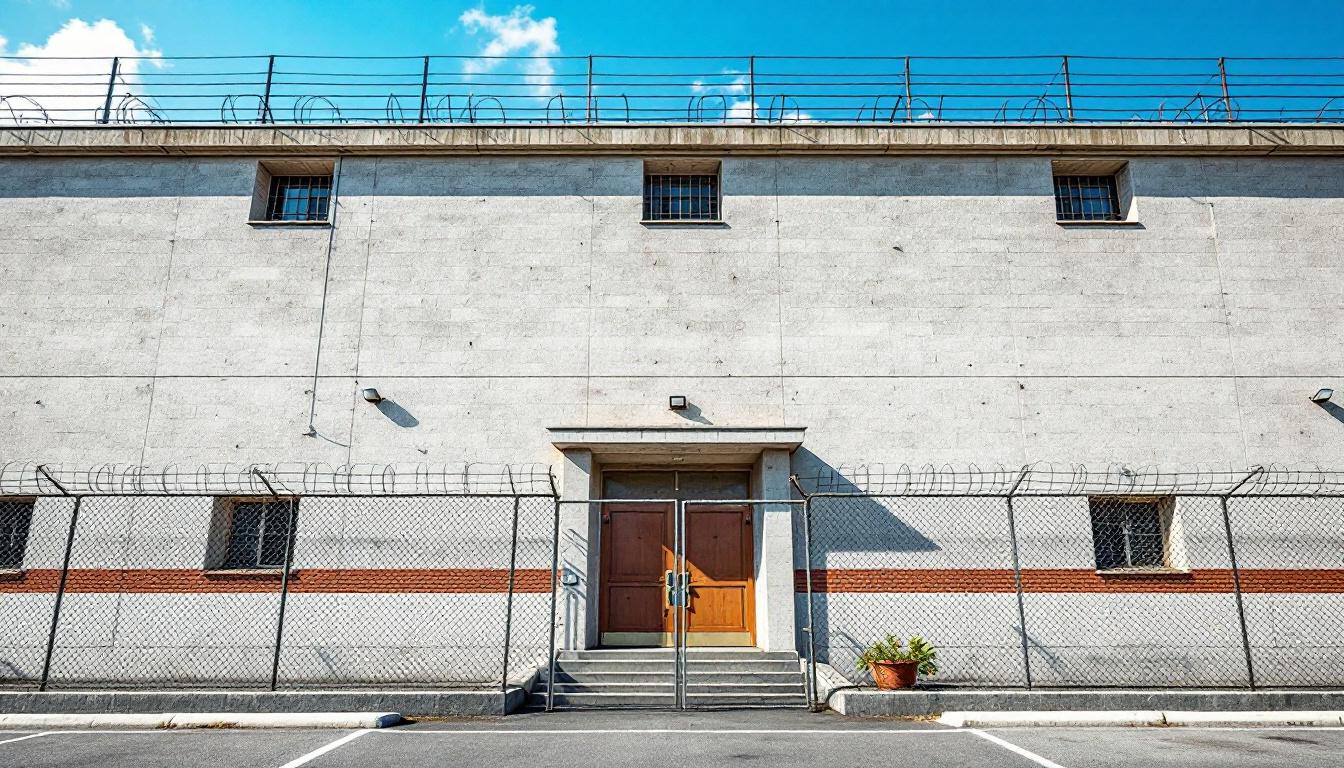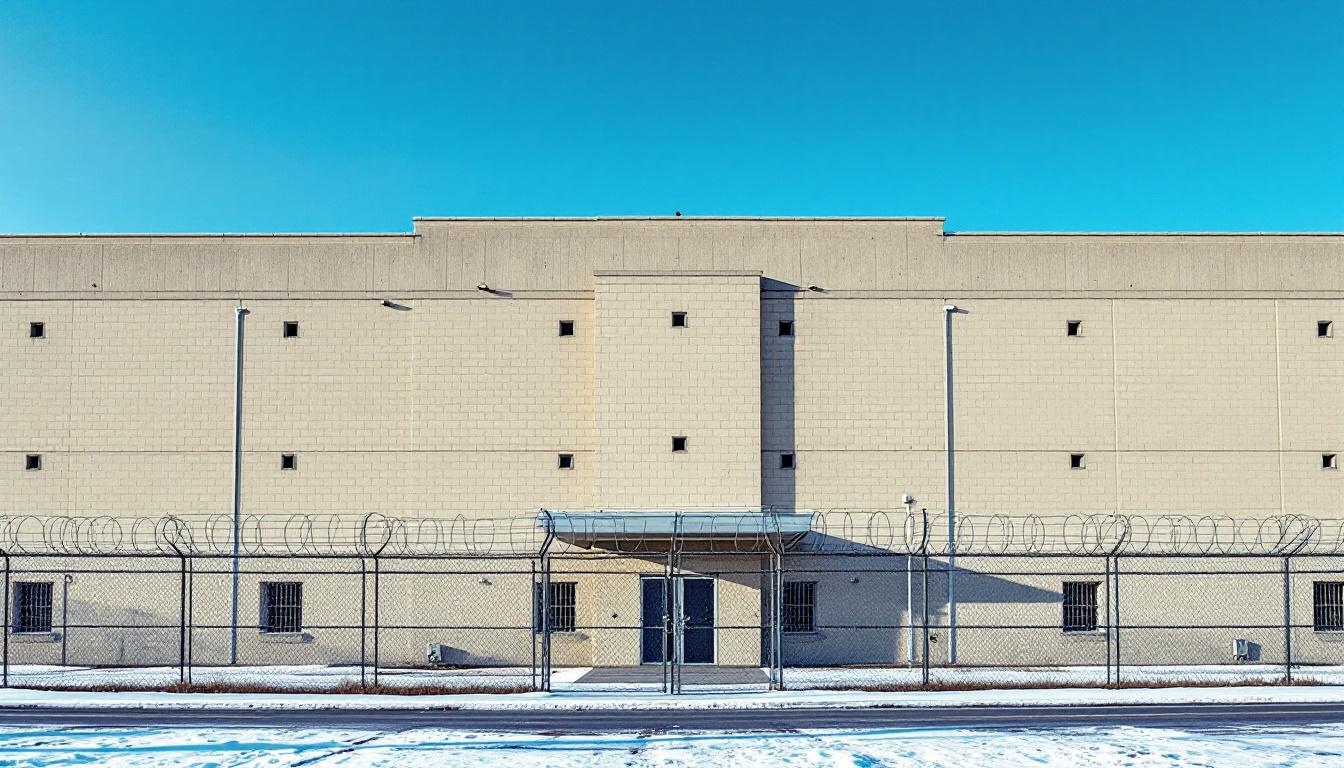
Quick Navigation
How to contact an inmate at Andrews County Sheriff's Office & Jail
This comprehensive guide will walk you through how to connect with an inmate at Andrews County Sheriff's Office & Jail. Follow the steps below to find an inmate and send letters and photos:
- Search for the inmate using our search tool below
- Create your account or log in to Penmate
- Write your message (up to 6,000 characters)
- Send instantly - inmates receive printed copies daily
Find an Inmate
Search for an inmate to start communicating today
Tip: You can search by first name, last name, or inmate ID number
To contact a person at Andrews County Sheriff's Office & Jail start by searching for the person on the official facility website. Perform a search by following these steps:
- Step 1: Enter their first name and last name into the search form and click "Search"
- Step 2: Locate their inmate record
- Step 3: Write down their Inmate ID and any housing information provided
Important! Be sure to enter the person's full name. Nicknames should not be used.
How to Send Messages to Inmates

You can use your phone or computer to send emails, letters, and photos to an inmate. Messages are sent electronically to inmate tablets or kiosks at the facility. If you would like to send a message, start by searching for an inmate at Andrews County Sheriff's Office & Jail.
Sending Photos and Postcards

A great way to send love and support to a loved one at Andrews County Sheriff's Office & Jail is to send photos and postcards. It only takes a few minutes to send photos from your phone and it makes a huge difference. You can also mail postcards with words of support and inspiration, or design your own postcard for special moments like birthdays and holidays.
Important! Be sure not to send any explicit photos or they may not be approved by the facility. You can also use a photo printing app like Penmate to make sure your photos are printed at the correct size (4x6 or 3x5) and are mailed according to the rules and regulations of Andrews County Sheriff's Office & Jail.
Frequently asked questions about Andrews County Sheriff's Office & Jail
-
How long does it take to deliver a message?
If you're sending an email message your letter is usually delivered within 24-48 hours. For messages sent via mail you should expect delivery within 3-7 days. All messages will need be approved by Andrews County Sheriff's Office & Jail.
-
How much does it cost to send a message to Andrews County Sheriff's Office & Jail?
You can send a message free using your phone or mail a message via USPS for the price of a $0.60 stamp and envelope. You can also purchase credits or e-stamps from services starting at $1.99.
-
What services can I use to contact an inmate at Andrews County Sheriff's Office & Jail?
Penmate
You can use Penmate to send letters and photos to an inmate from your phone. It's an easy way to stay in touch during your loved one's incarceration. Use the inmate locator to find an inmate's location and contact information, then you can send messages within a few minutes.
Securus messaging
Securus may be another option for communicating with an inmate at Andrews County Sheriff's Office & Jail. You can create a friends and family account and purchase credits to send messages. All messages will be reviewed and must be approved by the facility.
JPay
Some county jails and state prisons may support sending messages with JPay. You must register an account with the system, find your loved one, and purchase stamps to send messages. For some locations you can also attach photos.
Smart Jail Mail
You may also check if Smart Jail Mail is available at Andrews County Sheriff's Office & Jail. Smart Jail Mail is operated by Smart Communications and has contracted with some state and county jails. After purchasing credits, your messages and photos are sent to the facility, printed out, and then handed out to your loved one.
-
What is the mailing address of Andrews County Sheriff's Office & Jail?
Mailing address:
Andrews County Sheriff's Office & Jail
790 SE 401
Andrews, TX 79714
Phone: (432) 523-5545 -
What are the visiting hours at Andrews County Sheriff's Office & Jail?
Visiting hours at Andrews County Sheriff's Office & Jail vary by housing unit and security level. Generally, visits are scheduled on weekends and holidays, with some facilities offering weekday visits. Contact the facility directly at (432) 523-5545 or check their website for the current visiting schedule. Visits typically last 30-60 minutes and must be scheduled in advance.
-
What items are prohibited when sending mail to Andrews County Sheriff's Office & Jail?
Prohibited items typically include: cash, personal checks, stamps, stickers, glitter, glue, tape, staples, paperclips, polaroid photos, musical or blank greeting cards, hardcover books, magazines with staples, and any items containing metal or electronics. Only send letters on plain white paper with blue or black ink. Photos must be printed on regular photo paper (no Polaroids). Always check with Andrews County Sheriff's Office & Jail for their specific mail policies.
-
How do I send money to an inmate at Andrews County Sheriff's Office & Jail?
You can send money to an inmate at Andrews County Sheriff's Office & Jail through several methods: 1) Online using JPay, Access Corrections, or the facility's approved vendor, 2) Money orders mailed directly to the facility with the inmate's name and ID number, 3) Kiosks located in the facility lobby, or 4) Over the phone using a credit or debit card. Fees vary by method, typically ranging from $2.95 to $11.95 per transaction.
-
Can I schedule a video visit with an inmate at Andrews County Sheriff's Office & Jail?
Many facilities now offer video visitation as an alternative to in-person visits. At Andrews County Sheriff's Office & Jail, video visits may be available through services like Penmate, Securus Video Connect, GTL, or ICSolutions. Video visits typically cost $10-20 for 20-30 minutes and must be scheduled in advance. You'll need a computer or smartphone with a camera and reliable internet connection. Contact the facility for their specific video visitation policies and approved vendors.
-
What identification do I need to visit an inmate at Andrews County Sheriff's Office & Jail?
All visitors must present valid government-issued photo identification such as a driver's license, state ID, passport, or military ID. Minors must be accompanied by a parent or legal guardian who can provide the minor's birth certificate. Some facilities require visitors to be on the inmate's approved visitation list, which may require a background check. Contact Andrews County Sheriff's Office & Jail for specific ID requirements and visitor approval procedures.
-
How can I find out an inmate's release date?
To find an inmate's release date at Andrews County Sheriff's Office & Jail, you can: 1) Use the online inmate search tool if available, 2) Call the facility's records department, 3) Contact the inmate's case manager or counselor, or 4) Have the inmate provide this information during a call or visit. For privacy reasons, some facilities only release this information to immediate family members.
Facility Overview
Contact Information
Andrews County Sheriff's Office & Jail790 SE 401
Andrews, TX 79714
Phone: (432) 523-5545
Official Website

About Andrews County Sheriff's Office & Jail
Situated in the heart of West Texas, Andrews serves as home to a correctional facility that emphasizes collaborative partnerships with local organizations and community resources. Andrews Jail, TX operates as a county detention center within the broader framework of the state's correctional system, typically focusing on pre-trial detention and shorter-term sentences while maintaining strong connections to rehabilitation and support services throughout the region.
The facility generally approaches its mission through a service-oriented framework that may include educational programming, substance abuse counseling, and vocational training opportunities developed in coordination with community partners. TX correctional facility operations often emphasize preparing residents for successful reintegration, and Andrews Jail typically works alongside local agencies, faith-based organizations, and educational institutions to provide comprehensive support services. These collaborative efforts may encompass job readiness training, mental health resources, and family reunification programs designed to address the underlying factors that contribute to incarceration.
Residents services at this Andrews county jail commonly extend beyond basic detention functions to include access to library resources, recreational activities, and structured programming that supports personal development. The facility's institutional approach typically emphasizes maintaining connections between residents and their families while providing pathways toward positive change through community-based partnerships and evidence-informed practices that reflect contemporary correctional standards throughout Texas.
Programs & Services
Special education services form the cornerstone of educational initiatives at Andrews Jail, designed to address the diverse learning needs of residents who may have previously struggled in traditional academic settings. The facility typically emphasizes a comprehensive approach that recognizes each resident's individual circumstances and potential for growth. These initiatives often focus on building foundational skills while addressing barriers that may have contributed to educational challenges in the past.
Educational and vocational training initiatives work together to provide residents with practical skills for successful reintegration. Special education services may deliver individualized instruction that accommodates various learning styles and abilities, helping residents complete their educational goals at their own pace. Moreover, vocational training initiatives often include hands-on instruction in trades and technical skills that align with local employment opportunities. These educational components typically emphasize both academic achievement and practical skill development.
Support services and therapeutic initiatives create a framework for personal growth and behavioral change. Work programs may offer residents opportunities to develop job readiness skills while contributing to facility operations through maintenance duties and other essential tasks. Faith-based initiatives often provide spiritual guidance and community support for those who choose to participate. Moreover, anger management sessions typically focus on developing healthy coping strategies and conflict resolution skills. Trauma-informed care approaches may be integrated throughout these services, recognizing how past experiences can impact a resident's ability to engage successfully in rehabilitation efforts.
Daily Life & Visitation

Structured routines at present deliver essential stability for residents, with each day following a carefully planned schedule that actively promotes order and predictability. Wake-up times typically occur in the early morning hours, followed by personal hygiene periods and headcount procedures. Meal times generally anchor the daily schedule, with breakfast, lunch, and dinner served at consistent intervals that residents can rely upon.
Housing accommodations typically feature dormitory-style living arrangements or individual cells, depending on classification levels and available space. Residents usually share common areas for dining and recreation, whereas sleeping quarters may offer varying degrees of privacy. Personal property allowances generally include basic clothing items, hygiene supplies, and limited personal effects that residents can obtain through the commissary system.
Moreover, recreational opportunities often include outdoor exercise periods, indoor activities, and structured programming that may encompass educational or vocational components. Work assignments typically involve facility maintenance, kitchen duties, or laundry services that help residents maintain productive daily routines. Family connections remain important through scheduled visitation periods and telephone privileges, while mail correspondence generally provides additional communication options. These various elements work together to create a framework that helps residents adapt to institutional life while maintaining important relationships with their support systems.
Ready to Connect?
Start communicating with your loved one today
Search for an Inmate
